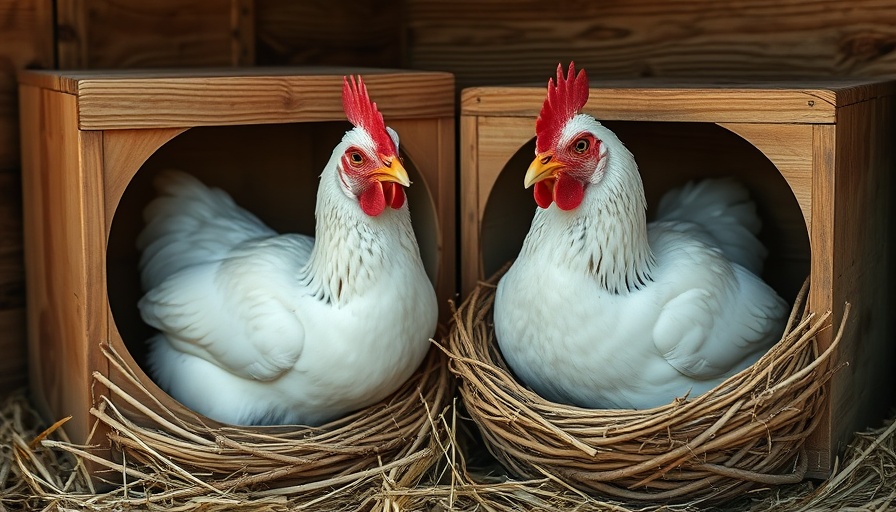
Finding the Optimal Nest Height for Your Chickens
The right height for chicken nests is crucial for ensuring efficiency and health in poultry management. Experts commonly suggest a height of 18 to 20 inches from the ground, but this guideline can vary based on factors like breed, age, and accessibility. Understanding the nuances of nest height can greatly impact egg production and overall flock well-being.
Why Nest Height Matters
Proper nest height is pivotal not just for egg collection but also for maintaining hygiene. Nests should be low enough to avoid injury during jumps yet elevated sufficiently to prevent chickens from using them for unintended activities—avoiding issues such as contamination from droppings, which can reduce egg quality. This balance plays a significant role in the sanitation of the laying environment.
The Risks of Low and High Nests
Nest boxes positioned too low can lead to problematic behaviors. Chickens may use nests for sleeping or play, leading to broken eggs and unsanitary conditions. Conversely, nests that are too high can cause problems for heavier breeds or those with limited flying ability, potentially resulting in injuries. Implementing ramps can help mitigate these risks for breeds that struggle with height.
Multiple Nesting Heights: A Practical Solution
To cater to the diverse needs of your flock, offering nesting boxes at varying heights can provide chickens with options. This strategy ensures that hens can select the nest that best suits their comfort, maximizing both welfare and egg laying efficiency. Additionally, optimizing nest placement within the coop by ensuring privacy and reducing disturbances can further enhance nesting behavior.
Encouraging Healthy Nesting Habits
To discourage sleeping in the nests, providing ample roosting options is essential. Chickens are more likely to choose roosts if properly elevated roosts are available. Training young hens to sleep in appropriate spaces requires consistent reinforcement, which can include gently placing them on the roost at night.
Monitoring your flock’s behavior and adjusting nest height and placement can significantly improve egg production and overall flock dynamics. By implementing these strategies, poultry managers can foster a healthier and more productive environment for their birds.
Take action today by evaluating your nesting setups. Ensure your hens have the best possible environment for successful laying.
 Add Row
Add Row  Add Element
Add Element 



 Add Row
Add Row  Add
Add 
Write A Comment